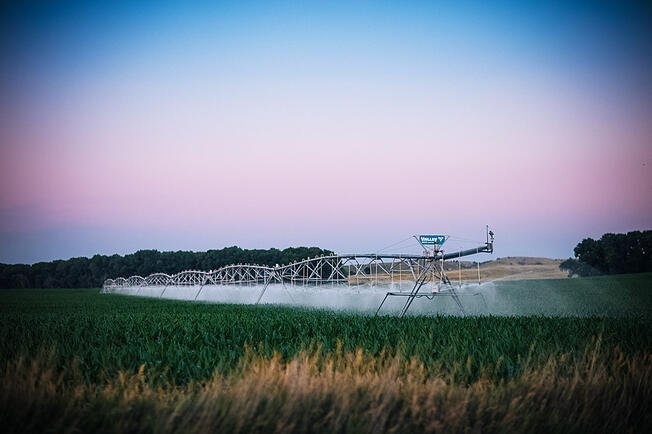 As a grower, you want to get maximum results from your water use. With this goal in mind, there are several important soil attributes to consider when making irrigation decisions. For irrigation to be effective, water needs to make its way from the center pivot into the soil and reach the roots so it can be utilized by growing plants. Before planning your next irrigation pass, take soil texture, soil structure and infiltration rate into consideration.
As a grower, you want to get maximum results from your water use. With this goal in mind, there are several important soil attributes to consider when making irrigation decisions. For irrigation to be effective, water needs to make its way from the center pivot into the soil and reach the roots so it can be utilized by growing plants. Before planning your next irrigation pass, take soil texture, soil structure and infiltration rate into consideration.
Soil texture is the ratio of sand, silt and clay particles in the soil. Sandy soils don’t hold much water and become water deficient quickly. By contrast, clay soils hold significantly more water, but the small particles and pore spaces in clay soil hold much of that water tighter than what is accessible by the plant. To put this into perspective, a sandy soil might be able to hold less than an inch of plant-available water per foot of soil, while a good silt loam may be able to hold more than 2 inches. Clay soils will hold more total water, but the plant-available portion may be less than 1.5 inches per foot of soil. Knowing your soil texture can help you determine how much water to apply for adequate availability without overwhelming the holding capacity of your soil.
Soil structure is how the individual particles of sand, silt and clay are grouped together into larger aggregates. Soil structure has a big influence on soil porosity, especially the openness of macropores that allow water and plant roots to move easily. Increasing organic matter and biological activity can improve your soil’s structure and keep macropores open. A healthy, porous soil will more easily accept irrigation water and make it available to the plant.
Although center pivot irrigation systems can provide moisture, soils can only take water that infiltrates through the soil profile. Compaction layers or changes in soil texture create barriers that stop water infiltration until the entire profile above that layer is saturated. Soil surface cover can help slow water drops and maintain openness of pores that reach the soil surface. Measuring infiltration rate and changing practices to increase the rate of infiltration can help you make the most of your irrigation application.
Knowing your soil’s texture, structure and infiltration rate can provide you with the tools you need to maximize the benefits of every application. Speak with your agronomist and your Valley dealer abot how to get the most out of your water.
Midwest Laboratories